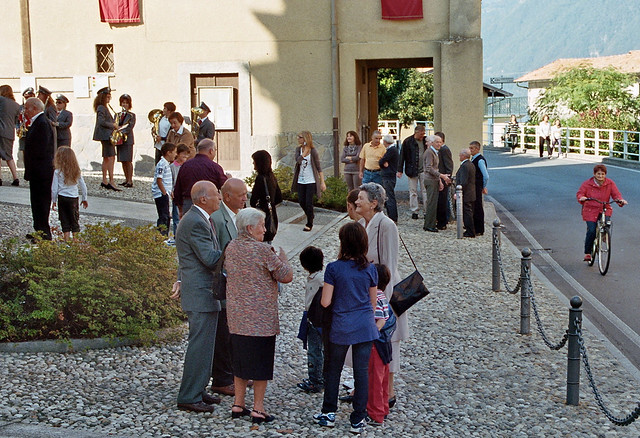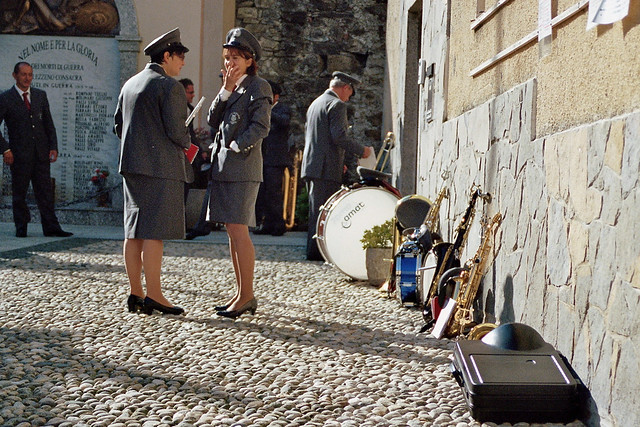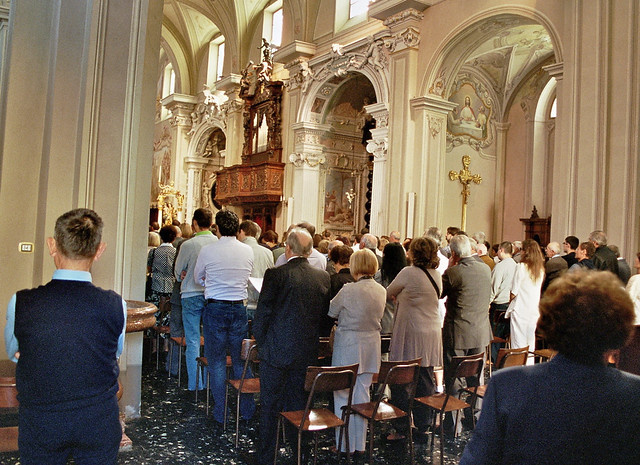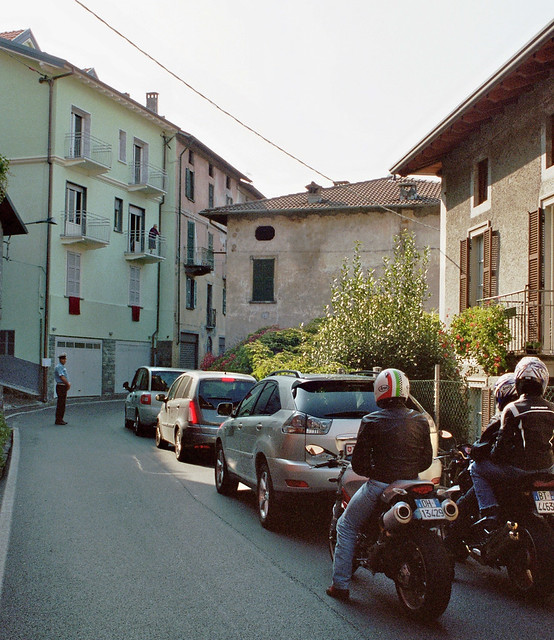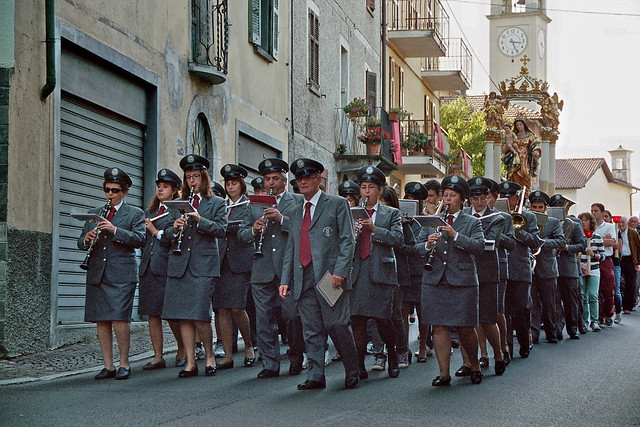This article is written by Parmanu, an Indian writer based in Germany
On Sunday, we decided to first visit the small church in our town, Lezzeno, before continuing to Bellagio. Visiting the church on a Sunday morning is a fast-disappearing habit in parts of Europe, and we thought it a good idea to preserve a memory or two of this ritual before it becomes extinct. But what we saw on this Sunday showed that our fears were for nothing. The whole town turned up at the church that morning, some in fine grey suits with sailor caps on their heads and wind instruments in their hands, and the ceremony we watched went back, we were told later, six hundred years.
Upon seeing this crowd — with its band, and the jollity all around — our excitement knew no bounds; Wife and I promptly took up positions and pointed our cameras at the locals, like tourists from the city descending on a tribal ceremony in the Amazon. I wondered if anyone noticed the reversal: in the land of the Paparazzi, the hunters were now the hunted. If they did, they didn’t seem to mind; some gave us generous smiles, but most of the locals ignored us, busy in their chatter on this fine Sunday morning. We waited across the road and watched as the band stood in line with their flutes, saxophones, trumpets, cymbals, bass drums and kettle drums, played an upbeat tune, after which everyone walked into the church. We followed, tentatively, through a side door. Inside, they all stood up for a hymn, and then a sermon began. We listened to the Italian pastor, invisible to us from the aisle, speak in a solemn tone as the congregation sat listening in rapt attention. After a few minutes we quietly slipped out, again through the side door.
This was better than what we had hoped for, but more was to come later that day. There was, however, an interlude in Bellagio.
If someone hatched a plot to get rid of all the tourists in the world, Bellagio would be a good place to start: with a single stroke a good third of this community would vanish from the earth. On a more constructive note, the town is an ideal site for an anthropologist studying the habits of this curious breed. We found, on our short walk through its winding streets (in Italy, all towns have “winding” streets), a young woman attempting a self portrait in a corner of a small square. As she went back and forth between her camera and her position, taking and retaking a shot in the manner of a fashion shoot, other tourists crossing the square forgot, momentarily, the town they were exploring and stopped instead to look at this unfolding spectacle. The woman, to her credit, was unmoved by this attention.
After a couple of hours of winding around we grew tired of jostling with the tourists; it was time to return. In Lezzeno, walking back after another good lunch at the Aurora, we ran into a traffic jam. A policeman, standing at its head, was followed by a tail of cars and bikes, all with their engines shut. They were made to wait for the procession of the feast of the Madonna, a festival whose beginning we had seen that morning. We stood next to the policeman, our cameras ready. Soon a column of Italians emerged, first the children, followed by women, then the handsome marching band, and finally the men carrying Virgin Mary’s statue.
As they came down the SS583, I could see why this road is so narrow: it was made not for two cars to pass each other, but for this marching band, whose beginnings preceded the automobile by a few centuries.
The column turned into a small alley, climbed up to the next block, and returned to the church along a parallel street. After the serendipitous encounter in the morning, this was another stroke of luck: ten minutes later we would have missed this beautiful procession.
Later in the evening our landlady explained, in French, some elements of the festival. Recalling the Assumption of Mary, the procession took place around the end of September each year; this tradition was about six centuries old, and she had taken part, like everyone else in town, since childhood.
Parmanu
23 Oct 2011
